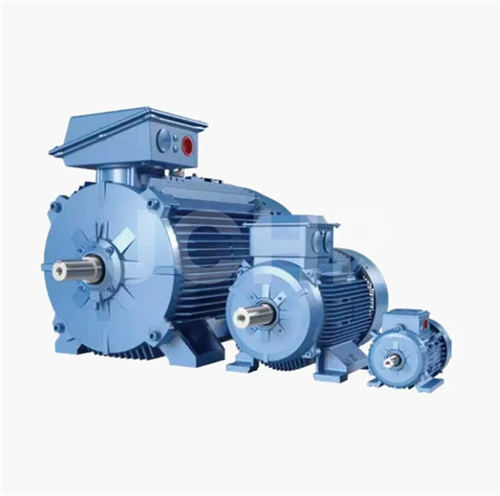What is the Working Principle of a Cardan Shaft?
A Cardan shaft, also known as a universal joint or driveshaft, plays a critical role in transmitting rotational motion between two components that are not in a straight line. Understanding the working principle of a Cardan shaft is essential for engineers and technicians involved in the design and maintenance of machinery, vehicles, and industrial equipment. This article delves into the key technical aspects of how a Cardan shaft operates and its role in various applications.
1. Introduction to the Cardan Shaft
The Cardan shaft is designed to transfer torque and rotational motion between components that may be misaligned or at varying angles to each other. This makes it a vital component in machinery where rigid coupling isn’t possible due to misalignment, such as in automotive driveshafts or heavy industrial machines. By utilizing universal joints at either end, the Cardan shaft compensates for angular misalignment and ensures smooth power transmission.
2. The Universal Joint Mechanism
At the core of the Cardan shaft’s working principle is the universal joint, which allows the transmission of torque at different angles. Each universal joint consists of a pair of yokes connected by a cross-shaped member called the spider. As the input shaft rotates, the spider transmits this rotation to the output shaft, even if the two shafts are at an angle. The universal joint enables the shafts to move freely while maintaining a constant connection, allowing for smooth and continuous rotation.
3. Torque Transmission and Angular Misalignment
One of the primary functions of the Cardan shaft is its ability to transmit torque between two misaligned shafts. In many applications, especially in vehicles and machinery, the drive and driven components are rarely perfectly aligned. The Cardan shaft compensates for this by allowing angular misalignment while transmitting rotational power efficiently. However, it’s important to note that the Cardan shaft introduces a slight variation in rotational speed when operating at an angle, which is referred to as velocity fluctuation.
To minimize the effects of this velocity fluctuation, many designs employ two universal joints arranged in such a way that they cancel each other out. This ensures that the driven shaft rotates at a uniform speed, even when the Cardan shaft operates at an angle.
Further reading:Mechanical Parts & Fabrication Services
4. Constant Velocity (CV) Joints vs. Cardan Shafts
What Is the Difference Between Flexible Metal Conduit and Metal Conduit?
2024 Trends in 28mm Gate Valve Technology
Essential Guide to 28mm Gate Valves: FAQs & Expert Tips
How Overhead Block Clamps Are Redefining Construction?
How Do Overhead Block Clamps Transform Concrete Projects?
How Will Longhe Attachment OEM Shape Industries?
While Cardan shafts are highly effective in many applications, they are not ideal for all scenarios. In cases where constant speed is critical, such as in front-wheel-drive vehicles, constant velocity (CV) joints are often used instead. CV joints maintain a constant rotational speed regardless of the angle between the shafts, eliminating the velocity fluctuation found in traditional Cardan shafts. However, Cardan shafts are more robust and cost-effective in applications where minor speed variation is acceptable.
5. Applications of the Cardan Shaft
Cardan shafts are commonly used in automotive drivetrains, where they connect the transmission to the differential, allowing for the transfer of power to the wheels. They are also used in industrial settings, such as in steel mills, paper plants, and heavy machinery, where flexibility in torque transmission is necessary due to misaligned or moving components. Their durability and ability to operate under high torque make them ideal for heavy-duty applications.
Conclusion
In summary, the Cardan shaft is an essential component for transmitting rotational power between misaligned or angled shafts. Its working principle is based on the universal joint mechanism, which allows for torque transmission even in angular misalignment. While it introduces some velocity fluctuation, this can be mitigated through the use of double-jointed shafts. The Cardan shaft remains a reliable and cost-effective solution for various applications across industries.
Looking forward, advancements in materials and design could further enhance the efficiency and durability of Cardan shafts, making them even more adaptable for future machinery and vehicles. If you are evaluating whether a Cardan shaft is right for your application, consider consulting with a technical expert or manufacturer to ensure optimal performance and longevity in your system.
How Does Heavy-Duty Forklift Attachment Work?
4 Tips to Select the Right Attachments for Your Forklift
Forklift Clamps vs. Conventional Forks: Which is Best for You?
How Do Advanced Waste Management Systems Work?
How Do Bale Clamps Benefit Contractors?
Essential Overhead Block Clamp for Concrete Contractors
The Advantages of Utilizing an Overhead Block Clamp for Concrete Contractors
Previous
None
Next
None
Related Articles
If you are interested in sending in a Guest Blogger Submission,welcome to write for us!









Comments
0